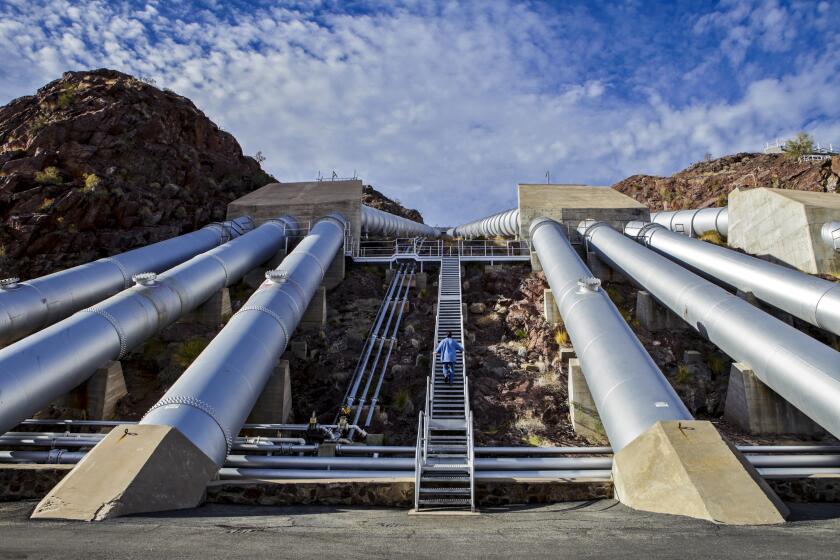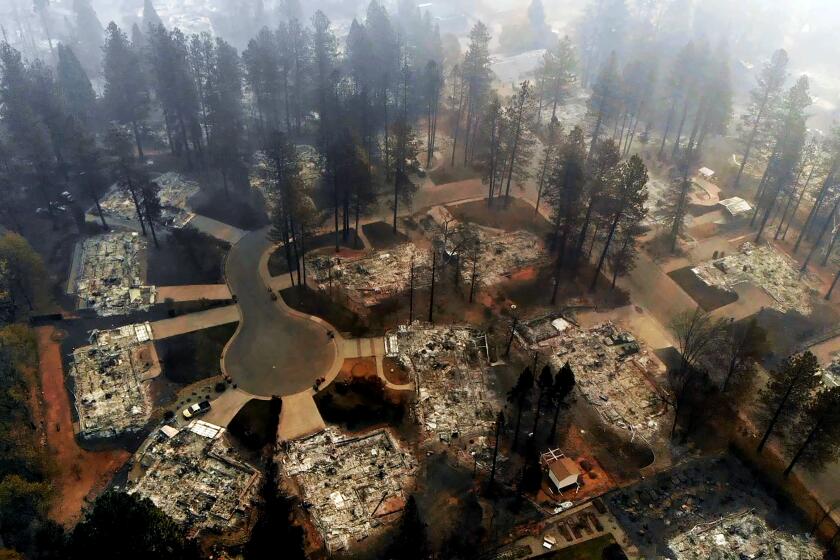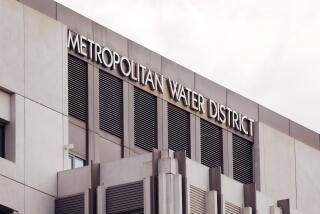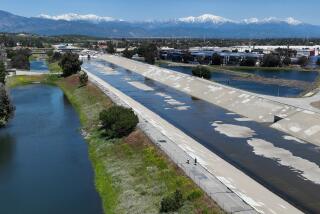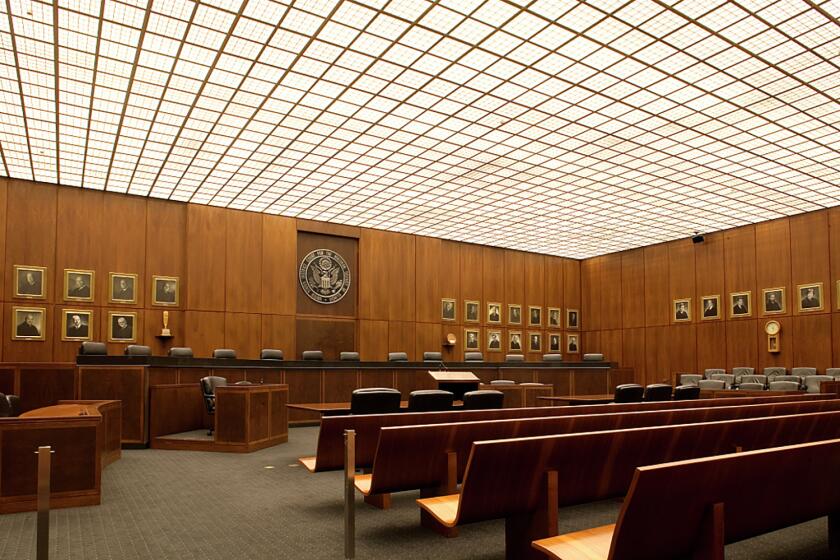Editorial: We’ll have to ask you to back away from the spigot, California
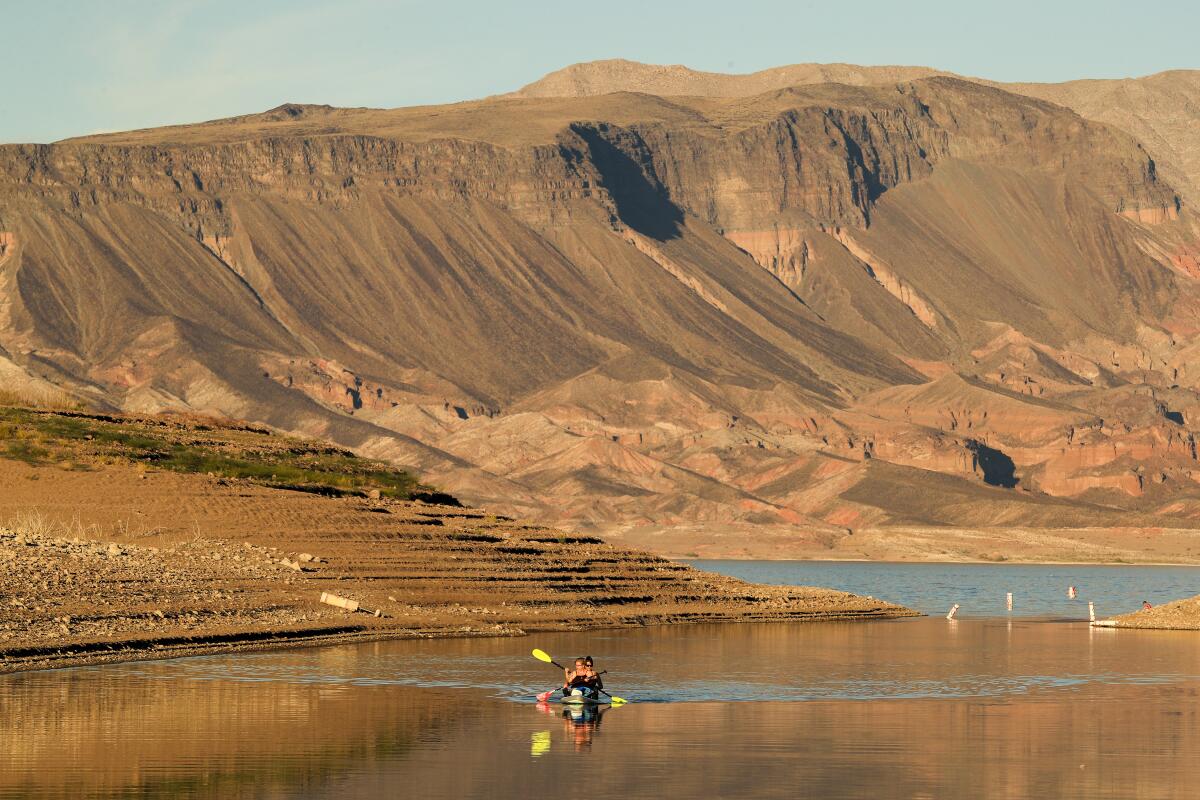
What a difference almost half a century makes. In 1973, amid the Arab oil embargo and resulting fuel shortage, drivers could fill their tanks only on certain days, based on license plates: Even numbers got Mondays, Wednesdays and Fridays; odd got Tuesdays, Thursdays and Saturdays. Or was it the other way around?
Now, instead of gasoline that’s running low, it’s sprinkler water; and instead of license plates determining when you can open the nozzle, it’s addresses. Beginning Wednesday, Los Angeles residents are permitted to water their lawns and gardens only two days a week. Mondays and Fridays go to homes with odd-numbered addresses; Thursdays and Sundays are for even numbers. Don’t let anyone catch you watering on Tuesdays, Wednesdays or Saturdays.
That’s an additional restriction on top of the three-day-per-week limit you’re currently following. And you are following it, right?
Right?
Cities and water agencies shouldn’t expect better conservation results until they step up with better information technology and the state updates its billing restrictions.
Limits make sense during the driest year in the state’s modern history, but it’s worth noting how voluntary conservation has worked so far in 2022: poorly.
Californians responded to official pleas for restricting consumption by using even more water— a lot more. In March, statewide water use shot up 19% over a similar period the previous year. In Southern California, the number was 27%.
Surprised? Don’t be. Californians are suffering from emergency fatigue, deprivation fatigue, even fatigue fatigue. The pandemic scared residents off the streets and into their homes, where they enjoyed the escapist consolation of kitchen experiments (meaning more dishes to wash) and lush gardens. Public health guidelines flummoxed them with ever-changing instructions on masks and vaccines and seemingly irrational bureaucratic and political divisions that imposed one type of mandate for, say, visiting an Orange County bar and another for a Los Angeles restaurant.
The early rollout of water cutbacks seemed to follow a similar pattern. The rules were perfectly rational when you looked at the supply sources: people in one neighborhood being served exclusively by imports from the California Water Project, with its depleted stores of Sierra snowmelt, and residents across town accessing imports from the Colorado River and its plentiful supply of Rocky Mountain runoff.
Except that the Colorado River — and the reservoirs it feeds, including the nation’s largest, Lake Mead — is not at all plentiful, and in fact is at least as strapped as other water sources. Besides, since when do residents need to know which reservoir and aqueduct supplies their taps?
Many Southern California cities outside of Los Angeles (which also has its own aqueduct, piping in water from the Eastern Sierra) have been on a one-day-a-week outdoor schedule since the wholesaler Metropolitan Water District imposed emergency restrictions on its member agencies in late April.
If ‘drought’ means a period of dry years followed by a return to the norm, California is not in drought. The current climate is the norm.
It’s no wonder that the state’s residents have not rushed to embrace water cutbacks. They’re confusing and frustrating. There’s a nagging feeling that, with very little visible enforcement on the neighbors, doing the right thing will be meaningless, because the guy down the street will just use what you don’t to keep his yard swampy and green.
Still, we have to cut back — and we will. Californians generally do. We understand the special privileges and burdens of living in this state. And we know — or we soon will — that giving up lawns is a relatively small sacrifice if it means having enough water to keep the trees alive, the (very brief, please) showers flowing and the (low-flush) toilets in service.
There simply will not be enough stored water in our lifetimes for perpetually green lawns. We are facing not a temporary “drought” but a reversion to a drier historical norm, exacerbated by hotter temperatures. Ramping up ocean desalination won’t be enough to allow us to keep our 20th century consumption patterns. Some desal is surely in our future, but no one who ends up paying the enormous price for that water would waste it on grass. Shutting out newcomers won’t do it, either. The largest proportion of new housing is apartments and condos, and their yard-free residents are far more water-thrifty than homeowners.
Nor is shutting down water-guzzling agriculture a solution — at least, not all of it. At some point, though, and sooner rather than later, we’re going to have to have a serious conversation about how many almonds, pistachios and bales of alfalfa California can produce and still keep its land and people healthy and happy.
More to Read
A cure for the common opinion
Get thought-provoking perspectives with our weekly newsletter.
You may occasionally receive promotional content from the Los Angeles Times.
